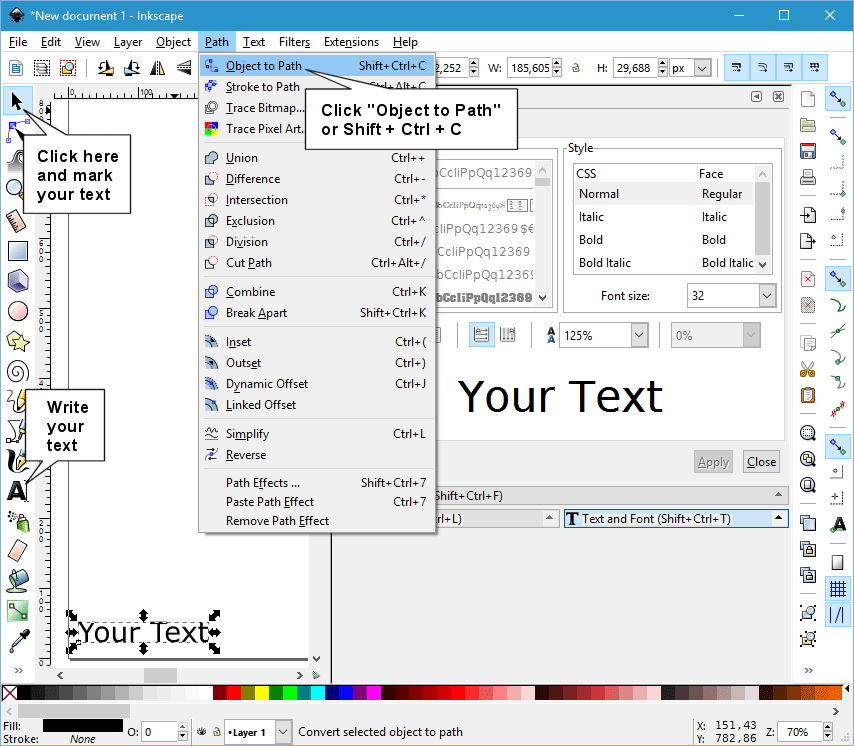
The same goes for text areas cut with a milling cutter on a CNC machine, certain types of laser-engraving, embroidery machines, and so on.Ī second reason (besides speed) to use engraving fonts with physical fabrication is that the tool size is often significant. The higher the pen resolution (the smaller the tip), the slower it will be. For example with a pen plotter, it’s much faster to draw the outline of the engraving font than to raster back and forth to fill in the entire outline font area. In these cases there’s no significant penalty for filling in large regions.īut, if you use any of the physical fabrication methods that we’ve already mentioned, then there is usually a significant time cost to filling in large regions. Outline fonts are perfect for use with high-resolution raster imaging devices, like LCD screens and laser printers. Now, there’s a time and place for both types of font face. This renders the engraving text correctly. In the lower box, both lines of text are drawn without any color fill, but instead with a solid black stroke. The engraving font is basically illegible, since the enclosed area is not meaningful.

The outline font is legible it looks as it is intended. In the upper box, both lines of text are drawn with a solid black fill, and no stroke (outline).

Here are examples of text written in an outline font versus written in engraving font: Fonts like these are appropriate for pen plotters, machine tools, and other circumstances where the pen width itself is significant.

Fonts like these are appropriate for use in laser printers or other high-resolution devices.īy contrast, an engraving font (sometimes called a “stroke” font) is one where each visible character is defined by the stroke itself, not the area enclosed by it. That is to say, the visible part of a character in an outline font is the area enclosed by the shape. In these, the font file describes a filled vector shape. Most modern font systems (truetype, postscript, opentype, etc.) are examples of outline fonts. We’ve mentioned outline fonts and engraving fonts, but let’s be clear on these. The trouble is, many CAD packages and most illustration packages (including our favorite, Inkscape) do not come with engraving font support, because it’s such a specialized requirement. For this very reason, many professional-level CAD tools include some form of engraving font. If you design for any of these on a regular basis, you’re likely to come across a case where you’d like to efficiently create some readable text with your tool, and “engraving” fonts are often the best choice. Thirty years later, low-cost and easily available computer-controlled manufacturing tools have created an exciting realm for exploration that’s even open to most hobbyists: Laser engravers, 3D printers, CNC routers, vinyl cutters, embroidery machines, and (yes) pen plotters. But then along came “outline” fonts, dot matrix monitors, high-resolution printers and personal computers. Good solutions– sets of “engraving” fonts –were developed. Creating simple representations of text was an important problem in early computer graphics, for both vector displays and pen plotters. Neither the problem nor the fundamental solution are new. But it goes to the heart of who we are and what we’re doing. Huh? What’s this all about? Why are you doing this?
#Inkscape gcode install#
Quick start: Download and install the EggBot extensions for Inkscape, which now include Hershey Text.

#Inkscape gcode how to#
This extension solves a persistent problem, and one which we have come across in many different contexts: How to easily create simple and readable vector representations of text. Hershey Text is an Inkscape extension that can render a line of text in one of several stroke-based “engraving” fonts.


 0 kommentar(er)
0 kommentar(er)
